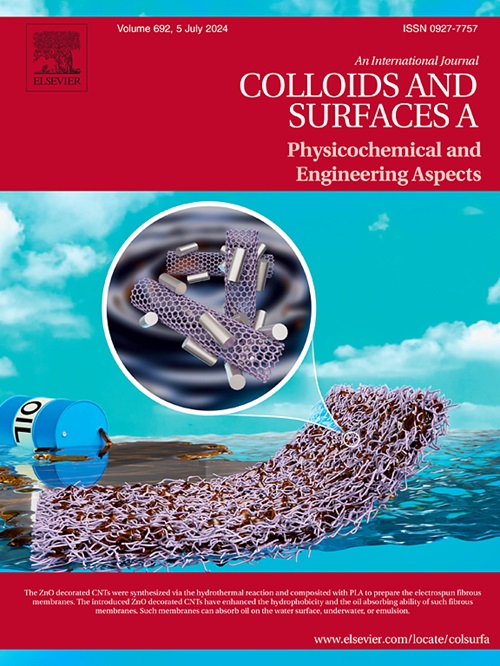A novel BiTaO4-based anode material for high -performance lithium/sodium-ion batteries
IF 4.9
2区 化学
Q2 CHEMISTRY, PHYSICAL
Colloids and Surfaces A: Physicochemical and Engineering Aspects
Pub Date : 2025-06-25
DOI:10.1016/j.colsurfa.2025.137576
引用次数: 0
Abstract
The advancement of sodium-ion batteries (SIBs) and lithium-ion batteries (LIBs) relies on the development of anode materials. In this study, we produced innovative anode materials for LIBs and SIBs, specifically bismuth tantalate (BiTaO4) and its carbon-coated composite (BiTaO4@C), using a solid-phase reaction and mechanical ball milling, respectively. The effective synthesis of BTO@C was confirmed through structural and morphological analyses, which demonstrated that the carbon coating enhances conductivity and mitigates volume expansion. Electrochemical measurements revealed that BTO@C exhibited exceptional performance in LIBs, achieving a reversible capacity of 371 mA h g−1 after 100 cycles at 100 mA g−1, along with outstanding rate capability. In SIBs, BTO@C maintained a stable capacity of 145.1 mA h g−1 after 100 cycles. Kinetic studies revealed a mixed capacitive-diffusion charge storage mechanism, with carbon coating significantly reducing charge transfer resistance and enhancing ion diffusion. These findings indicate that BTO@C is a promising anode material for high-efficiency energy storage systems, providing improved cycling stability and rate performance.
一种新型的高性能锂/钠离子电池负极材料
钠离子电池(SIBs)和锂离子电池(LIBs)的进步有赖于负极材料的发展。在这项研究中,我们分别使用固相反应和机械球磨技术为lib和sib生产了创新的阳极材料,特别是钽酸铋(BiTaO4)及其碳涂层复合材料(BiTaO4@C)。通过结构和形态分析证实了BTO@C的有效合成,表明碳涂层提高了电导率,减轻了体积膨胀。电化学测量表明,BTO@C在lib中表现出优异的性能,在100 mA g−1下循环100次后,可逆容量达到371 mA h g−1,同时具有出色的速率能力。在sib中,BTO@C在100次循环后保持145.1 mA h g−1的稳定容量。动力学研究揭示了电容扩散混合电荷存储机制,碳涂层显著降低了电荷传递阻力,增强了离子扩散。这些发现表明BTO@C是一种很有前途的高效储能系统阳极材料,可以提供更好的循环稳定性和倍率性能。
本文章由计算机程序翻译,如有差异,请以英文原文为准。
求助全文
约1分钟内获得全文
求助全文
来源期刊
CiteScore
8.70
自引率
9.60%
发文量
2421
审稿时长
56 days
期刊介绍:
Colloids and Surfaces A: Physicochemical and Engineering Aspects is an international journal devoted to the science underlying applications of colloids and interfacial phenomena.
The journal aims at publishing high quality research papers featuring new materials or new insights into the role of colloid and interface science in (for example) food, energy, minerals processing, pharmaceuticals or the environment.

 求助内容:
求助内容: 应助结果提醒方式:
应助结果提醒方式:


